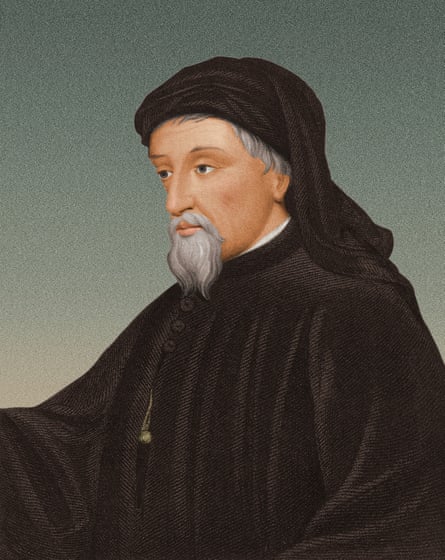The British Library has made Chaucer’s works accessible online, bringing them into the digital age.
The British Library has recently completed a project that involved uploading 25,000 images of medieval manuscripts, which are intricately illustrated, in order to make the entire collection of Geoffrey Chaucer’s works available in a digital format.
The library has reached a significant achievement with the launch of a digital platform. This platform will provide access to the largest surviving collection of Chaucer’s work, opening up opportunities for new research on the 14th-century poet, courtier, soldier, diplomat, and MP, famous for his Middle English masterpiece, The Canterbury Tales.
Chaucer, who passed away around the year 1400, was praised by fellow poet Thomas Hoccleve as the “original creator of our beautiful language” and is widely recognized as the pioneer of English poetry. He was essentially the first official poet, receiving a daily gallon of wine from Edward III for an unknown duty, believed to be for his poetic creations. He was also the first to be laid to rest in the area of Westminster Abbey known as Poets’ Corner.
The British Library possesses over 60 objects pertaining to his literature and existence, and has recently converted them into a digital format.
A collection of 25,000 images depicting manuscripts from before 1600 has been meticulously captured and shared online. This includes full versions of Chaucer’s poems, as well as rare examples such as fragments found in Middle English collections or written in early printed books (incunabula).
There are 23 manuscripts of The Canterbury Tales, a collection of stories about a storytelling competition between pilgrims traveling from London to Canterbury Cathedral. Written shortly after Chaucer’s death around 1400, the collection also contains unique copies of the 1476 and 1483 versions of the text created by William Caxton.
There are also other works by the author that are not as well-known, including his Trojan epic Troilus and Criseyde, which served as inspiration for Shakespeare. He also wrote a dream vision called The Legend of Good Women, which features 10 female characters from classical history, legend, and mythology in often tragic stories. Additionally, he translated the Roman de la Rose and The Consolation of Philosophy, and wrote a guide on how to use the astrolabe, an astronomical instrument. He also composed a variety of smaller poems.

The curator of medieval manuscripts at the British Library, Calum Cockburn, is overseeing the project. He mentioned that one of the manuscripts of the Canterbury Tales features a remarkable portrait of Chaucer himself at the start of the General Prologue, along with the famous line, “When April with its sweet-smelling showers.” In the letter “W” of “Whan,” Chaucer can be seen with an open book and a quill, which is a rare and delightful detail as there are not many surviving portraits of him.
I particularly enjoy a compilation of writings that is still held together by its original medieval binding, complete with a clasp. This binding has remained unaltered for six centuries.
According to him, the digital archive held immense possibilities and the 25,000 images were of exceptionally high quality. You can magnify these images and observe details that would be impossible to see with the naked eye. They are truly remarkable.
“We anticipate that this will establish a strong basis for future studies. With numerous technological developments currently in progress, this digital platform enables us to easily share manuscripts, compare them, and delve into inquiries about the transmission and copying of Chaucer’s works. We can also explore the scribes involved, as well as the readership, providing us with valuable insights that may have been more limited in the past.”
Skip the advertisement for the newsletter.
after newsletter promotion
Chaucer’s poems were carefully transcribed by scribes during his lifetime and were then published in bound volumes and distributed among the wealthy, upper merchant classes, and nobility. His works continued to be well-received even after his passing.
According to Cockburn, there is a fascinating tale surrounding a particular royal manuscript in the collection. Supposedly, during Elizabeth Woodville’s journey to her coronation, she was given a copy of The Canterbury Tales while crossing London Bridge. This small but significant event highlights the incredible nature of the manuscript.
The British Library website is where the collection can be accessed.
Source: theguardian.com



